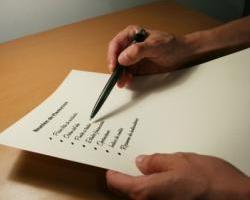DSM Criteria for Bulimia
 Bulimia is a condition that affects about 1 to 4 percent of women in their lifetimes, according to the National Association of Anorexia and Associated Disorders (ANAD).
Bulimia is a condition that affects about 1 to 4 percent of women in their lifetimes, according to the National Association of Anorexia and Associated Disorders (ANAD).
Bulimia is usually diagnosed through criteria set forth in the Diagnostic and Statistical Manual of Mental Disorders (DSM).
The newest edition, DSM-5, outlines a set of characteristics and behaviors that may be common for bulimia sufferers.
Overlapping Conditions
The DSM notes that a significant number of individuals often don’t fit the categories of either anorexia or bulimia, so they are sometimes classified as having an “eating disorder not otherwise specified,” or EDNOS .
In the most recent updates to the DSM, however, researchers recognized that many EDNOS individuals may actually have binge eating disorder – which was a newly added category to the DSM-5.
Therefore, it’s important to know that symptoms of bulimia may include symptoms of both anorexia and binge eating disorder, as many patients seem to exhibit disordered eating behaviors from several different diagnostic categories.
Behaviors
According to the DSM, bulimia nervosa is characterized by:
- Frequent episodes of binge eating. This may include overeating consistently throughout the day or binge episodes that happen at specific times, like late at night or while alone.
- Self-induced vomiting. Bulimia sufferers use “inappropriate behaviors” like vomiting to avoid weight gain. Some research suggests that bulimia may also be an appropriate diagnosis for people who don’t induce vomiting but who instead abuse laxatives, which may be unofficially called “laxative bulimia.”
Frequency
The DSM-5 also made changes in regards to frequency of bulimic behaviors, as the behaviors must be exhibited at least once a week. Older versions of the DSM specified the behaviors must be present at least twice weekly.
However, a person may indeed suffer from bulimic behaviors on a more or less frequent basis, which could mean there are other disordered eating habits or conditions present.
 Eating Disorder Self Test. Take the EAT-26 self test to see if you might have eating disorder symptoms that might require professional evaluation. All answers are confidential.
Eating Disorder Self Test. Take the EAT-26 self test to see if you might have eating disorder symptoms that might require professional evaluation. All answers are confidential.